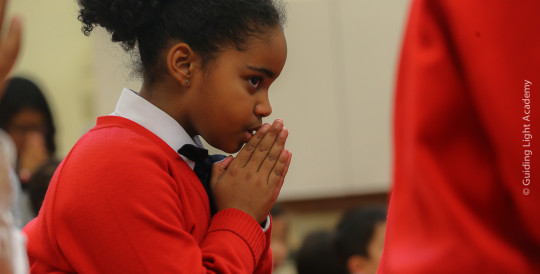On February 13, 2015, the students of Guiding Light Academy participated in two sessions of a Lenten retreat. The theme for the Grades 2 through 6 was the ‘History and origins of Lent’. With a great emphasis of what it means in growing in our relationship with Jesus Christ. The Junior Kindergarten and Senior Kindergarten along with Grade 1 delved into the history of the Stations of the Cross followed by a craft of coloring their very own stations.
Lent for most Catholics is an event that we all know what it is but the greater question is, ‘do we really’? The Catholic Church here in Canada and especially in the archdiocese of Toronto is so cosmopolitan, drawing from traditions from all over the world, that we sometimes lose the true meaning of things because of the plurality of the peoples and traditions. For example what does Lent mean? Let’s start: In Latin, Lent is referred to by the term Quadragesima (meaning “fortieth”), in reference to the fortieth day before Easter. This term underlies the names of Lent in Romance, Celtic, and some Slavic languages (for example, Spanish cuaresma, Portuguese quaresma, French carême, Italian quaresima, Romanian păresimi, Croatian korizma, Irish Carghas, and Welsh C(a)rawys). The terms used in Tagalog are Cuaresma (from Spanish) and Mahal na Araw (Beloved Days). In Greek, the word is Σαρακοστή, derived from Τεσσαρακοστή, with the same meaning as Latin Quadragesima.In German Fastenzeit and most Slavic languages; the common name is simply a phrase meaning “fasting time” as Czech postní doba or “great fast” as Russian великий пост vyeliki post or Polish wielki post. In English, the word used is Lent, which initially meant spring as in German Lenz and Dutch lente and derives from the Germanic root for long, because in spring the days visibly lengthen.
We can see that different peoples emphasize on different aspects of our Lenten tradition. But I think we need to go to the Old Testament and from the Old Testament leap into the Gospels to truly understand what Lent is. When God complaints of the chosen people that their hearts are far from him. He states that their sacrifices (which were ordered by him) did not satisfy because they miss treated the widow and the orphan that took advantage of their brother who was of need so on and so forth. What’s he called us to in the Old Testament was a Jubilee of good actions. When we see Christ he applauded the observances of the Jews but then called in to something greater the Works Of Mercy. He called some hypocrites because they followed external observances while their hearts were far from him. In a certain sense, it’s very easy to give up chocolate: very hard to be understanding to an impossible neighbor. But the question is where is the sacrifice. For many Lent has become a form of Catholic dieting, for 40 days, I won’t have any sugar, I’ll lose a couple of pounds but the true meaning of this period of purification is that we lose many faults and failings: conquer ourselves and our sinful desires. We become true Christians, we die to ourselves and our sins and defects and resurrect with Christ on Easter. In our Lenten reflection we encourage them to examine themselves, how do we treat our parents, our siblings and our classmates? The challenge placed in front of our students was what am I going to do with this period of preparation and how can I help my neighbor, whoever that neighbor can be. Because truly that is what lent is all about the parables of Christ, the parable of the Good Samaritan giving of oneself when one receives nothing in return, the Parable of the Mustard Seed, spreading the cedar face and little people and waiting to see what come of it, possibly, The great leaders of tomorrow. And finally the Parable Of The Sower, spreading the seed on good land, on rocky land, on barren soil and amongst the thorns waiting for God’s grace to act and germinate. Let’s pray that our children took heart the challenge and can be little apostles in their very homes.
-Br. Justin Bonyun




